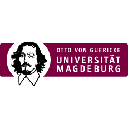Executive Secretary

11nd International Conference of Mechanical Engineering
COMEC 2023
XVIII Materials and Welding Symposium
Abstract
• Introduction: Metallographic replication has become an effective method in the study of residual life, to the point where normative documents of wide international application have been developed, such as the ASTM E1351-01 standard. Although this standard contemplates the use of scanning electron microscopy, it does not yet consider the use of transmission electron microscopy, despite it being convenient and feasible from a practical point of view.
• Objective: Establishing the microstructural condition of the material of a SA335 Grade P11 steel steam pipe with over 20 years of service at 480 °C, using metallographic replication.
• Materials and Methods: Direct extraction replication was applied, combined with TEM.
• Results and Discussion: The microstructure present in the steel was of the ferrite-perlite type. The ferrite exhibited regular and uniformly sized intergranular and intragranular precipitation (approximately between 50 and 100 nm). At the service temperature, the ferrite would have reached, with respect to M2C (88% Mo, 6% Fe, and 6% Cr), a composition close to equilibrium after a process of nucleation and growth of M2C.
• Conclusions: The SA335 Grade P11 steel, after more than 20 years in service at 480 °C, exhibited a ferrite-perlite microstructure with intergranular and intragranular precipitation in the ferrite. The occurrence of competitive growth phenomenon due to the time and service temperature was evidenced. Metallographic replication, using MET, constitute an efficacious method to evaluate the microestructura of steam pipes.
Resumen
• Problemática: La réplica metalográfica se ha convertido en un método efectivo en el estudio microestructural, hasta el punto en que se han elaborado documentos normativos de amplia aplicación a nivel internacional, como es la norma ASTM E1351-01. Dicha norma contempla el uso de la Microscopía Electrónica de Barrido, pero aún no tiene concebido el uso de la Microscopía Electrónica de Transmisión (MET), a pesar de resultar conveniente y factible desde el punto de vista práctico.
• Objetivo(s): Establecer el estado microestructural del material de una tubería de vapor de acero SA335 Grado P11 con más de 20 años de servicio a 480 oC, empleando la réplica metalográfica.
• Metodología: Se aplicó la réplica de extracción directa, combinada con MET.
• Resultados y discusión: La microestructura en el acero fue del tipo ferrito-perlítica. La ferrita presentó precipitación intergranular e intragranular de forma regular y tamaño homogéneo (aproximadamente entre 50 y 100 nm). A la temperatura de servicio la ferrita habría alcanzado, con relación al M2C (88% de Mo, 6% de Fe y 6% de Cr), una composición próxima a la de equilibrio, después de un proceso de nucleación y crecimiento de M2C.).
• Conclusiones: El acero SA335 Grado P11, con 20 años en servicio a 480 oC, presentó una microestructura ferrito-perlítica con precipitación intergranular e intragranular ferritica. Se evidenció la ocurrencia del fenómeno del crecimiento competitivo por efecto del tiempo y la temperatura de servicio. La réplica metalográfica, aplicando MET, constituye un método eficaz para evaluar la microestructura de tuberías de vapor.
About The Speaker

Alfonso Rafael Fernández Fuentes

kigikugiuh
Discussion



